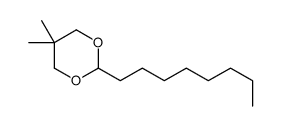天然橡胶

天然橡胶结构式

|
常用名 | 天然橡胶 | 英文名 | polyisoprene |
|---|---|---|---|---|
| CAS号 | 9003-31-0 | 分子量 | 228.37100 | |
| 密度 | 0.92 g/mL at 25ºC | 沸点 | 122-142ºC(lit.) | |
| 分子式 | C14H28O2 | 熔点 | N/A | |
| MSDS | N/A | 闪点 | >230 °F | |
| 符号 |



GHS02, GHS07, GHS08 |
信号词 | Danger |
|
Does Brillouin light scattering probe the primary glass transition process at temperatures well above glass transition?
J. Chem. Phys. 132(7) , 074906, (2010) The primary alpha-relaxation time (tau(alpha)) for molecular and polymeric glass formers probed by dielectric spectroscopy and two light scattering techniques (depolarized light scattering and photon correlation spectroscopy) relates to the decay of the torsi... |
|
|
Bicontinuous polymeric microemulsions from polydisperse diblock copolymers.
J. Phys. Chem. B 113(12) , 3726-37, (2009) Polymeric bicontinuous microemulsions are thermodynamically stable structures typically formed by ternary blends of immiscible A and B homopolymers and a macromolecular surfactant such as an AB diblock copolymer. Investigations of these bicontinuous morpholog... |
|
|
Comparative study of the mesostructure of natural and synthetic polyisoprene by size exclusion chromatography-multi-angle light scattering and asymmetrical flow field flow fractionation-multi-angle light scattering.
J. Chromatogr. A. 1224 , 27-34, (2012) This paper presents results from the first analyses of the mesostructure of natural rubber (NR) by asymmetrical flow field flow fractionation (AF4). The results are compared with those obtained by size exclusion chromatography (SEC) in terms of average molar ... |
|
|
Initiation of rubber biosynthesis: In vitro comparisons of benzophenone-modified diphosphate analogues in three rubber-producing species.
Phytochemistry 69(14) , 2539-45, (2008) Natural rubber, cis-1,4-polyisoprene, is a vital industrial material synthesized by plants via a side branch of the isoprenoid pathway by the enzyme rubber transferase. While the specific structure of this enzyme is not yet defined, based on activity it is pr... |
|
|
Possible involvement of an extracellular superoxide dismutase (SodA) as a radical scavenger in poly(cis-1,4-isoprene) degradation.
Appl. Environ. Microbiol. 74(24) , 7643-53, (2008) Gordonia westfalica Kb1 and Gordonia polyisoprenivorans VH2 induce the formation of an extracellular superoxide dismutase (SOD) during poly(cis-1,4-isoprene) degradation. To investigate the function of this enzyme in G. polyisoprenivorans VH2, the sodA gene w... |
|
|
Development of a homologous expression system for rubber oxygenase RoxA from Xanthomonas sp.
J. Appl. Microbiol. 109(3) , 1067-75, (2010) Natural rubber (poly-[cis-1,4-isoprene]) can be cleaved into 12-oxo-4,8-dimethyltrideca-4,8-diene-1-al by rubber oxygenase A (RoxA) isolated from Xanthomonas sp. RoxA is a novel type of dihaem dioxygenase with unknown cleavage mechanism of the rubber carbon b... |
|
|
Characterization of rubber particles and rubber chain elongation in Taraxacum koksaghyz.
BMC Biochem. 11 , 11, (2010) Natural rubber is a biopolymer with exceptional qualities that cannot be completely replaced using synthetic alternatives. Although several key enzymes in the rubber biosynthetic pathway have been isolated, mainly from plants such as Hevea brasiliensis, Ficus... |
|
|
Thermoresponsive complex amphiphilic block copolymer micelles investigated by laser light scattering.
J. Phys. Chem. B 112(20) , 6358-62, (2008) Poly(isoprene)-block-poly(ethylene oxide) (PI-b-PEO) diblock copolymers form micelles in water. The introduction of poly(ethylene oxide)-block-poly(propylene oxide)-block-poly(ethylene oxide) (PEO-b-PPO-b-PEO) triblock copolymer leads to the formation of mixe... |
|
|
Effects of compositional asymmetry in phase behavior of ABA triblock copolymer melts from Monte Carlo simulation.
Eur. Phys. J. E 33(4) , 343-50, (2010) We simulate ABA triblock copolymer melts using a lattice Monte Carlo method, known as cooperative motion algorithm, probing various degrees of compositional asymmetry. Selected order-disorder transition lines are determined in terms of the segment incompatibi... |
|
|
Synthesis of polyisoprene terpenoid dendrons and their applications in oligo(phenylene ethynylene)s as "shells".
Chem. Asian J. 7(1) , 143-55, (2012) The novel double-stage convergent synthesis of a new class of polyisoprene terpenoid (PIPTP) dendrons is described. PIPTP dendrons bear a highly branched aliphatic hydrocarbon skeleton and a hydrophilic hydroxy focal point functionality. These dendrons have t... |